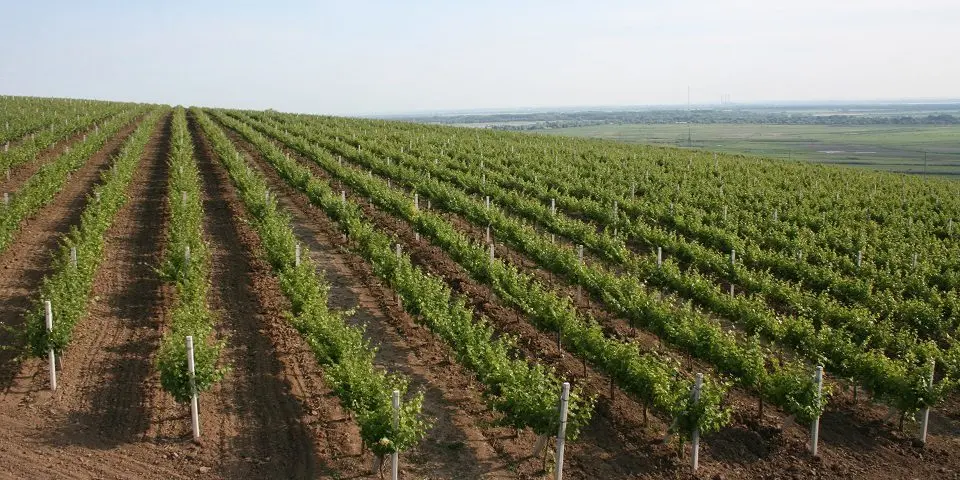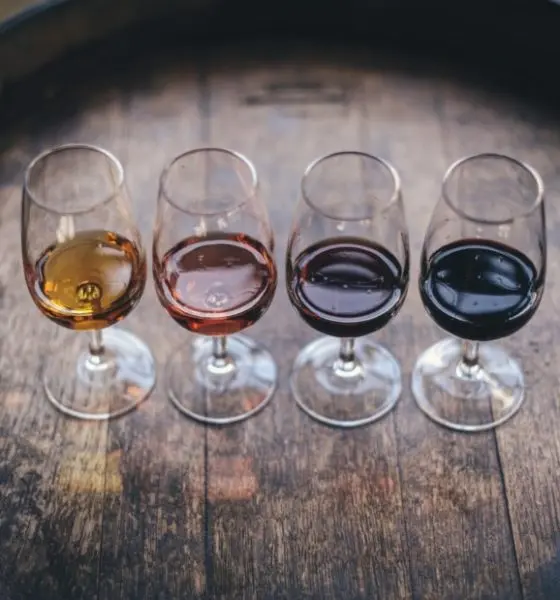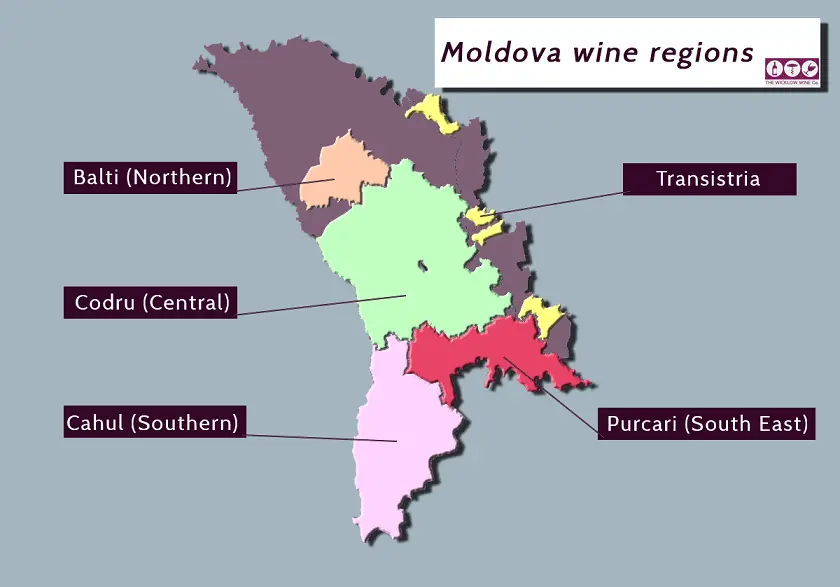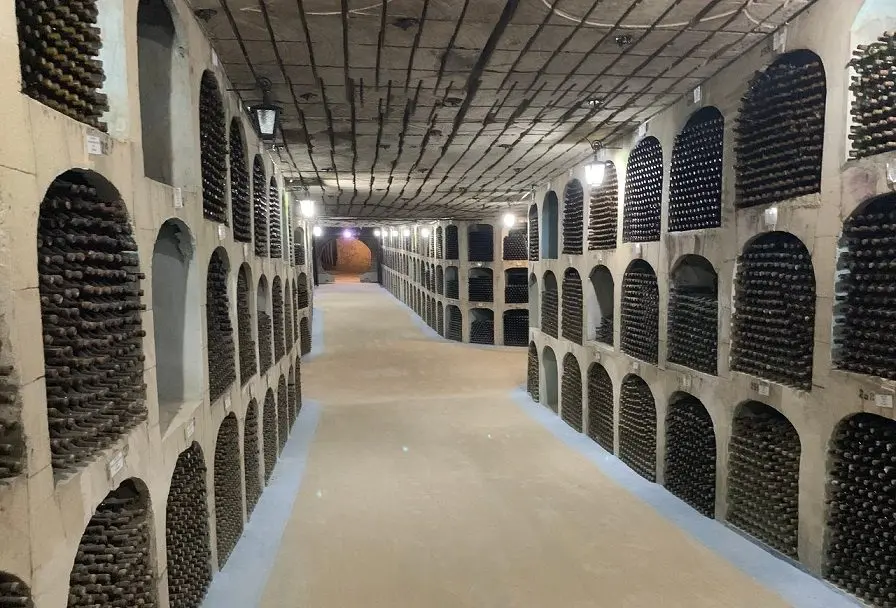Contents
After the collapse of the USSR, Moldovan wines were practically forgotten, but now interest in them is beginning to revive. Over the past fifteen years, the Moldovan wine industry has gone far ahead and continues to develop successfully. Sommeliers, experts and restaurateurs of Russia visit the largest factories in the industry, and a wine guide is planned to be released in the near future.
History of Moldovan winemaking
The first evidence of developed viticulture in the area of the Prut-Dniester interfluve dates back to 2800 BC. e. In the XIV century, the Moldavian state already exported its wines to neighboring countries, and after the annexation of Bessarabia to Russia in 1812, a new round of development of the industry began, which by that time had suffered greatly from Turkish rule.
In 1914, the area of Moldovan vineyards was the largest in the Russian Empire, but the First World War and the subsequent revolution caused significant damage to the plantings. Attempts to revive winemaking have been made since 1918, but the intensive development of the industry began only in the 1950s. Over the next decade, most of the local hybrid varieties were replaced by European varieties.

The Moldavian SSR was one of the main suppliers of wines in the Soviet Union and ranked third in terms of output. At the enterprises of the republic, along with traditional brands (Feteasca, Negru de Purcari, Gratiesti), table and dessert wines, sherries, vermouths, champagne and cognacs were produced. At international exhibitions, Moldovan wines won a total of 265 medals and were exported to all countries of the socialist camp.
The country’s vineyards suffered greatly during the anti-alcohol campaign, when plantings were cut down and irreparable harm was caused to the industry as a whole. Until 2006, Russia was the main consumer of Moldovan wines, but after the embargo on the import of alcoholic products, the industry fell into decline. Manufacturers had to master the European market and seriously work on improving the quality of products. Currently, Moldova successfully sells wines in the USA, China, South Korea, Poland, the Czech Republic, Great Britain and Romania.

Features of winemaking in Moldova
Two-thirds of all vineyards are devoted to white grape varieties, the most popular being Rkatsiteli, Sauvignon Blanc and Chardonnay. Traditional red grapes are also grown in Moldova: Pinot Noir Merlot, Saperavi.
However, local species are of particular interest:
- Feteaska (Albe, Regale, Neagre) – early varieties with a strong floral aroma and a pronounced fruity taste with pear, peach and plum tones;
- Rara Neagre is a late variety growing in the south of the country, distinguished by a bright fruity bouquet with hints of cherries, prunes and red currants;
- Plavai is a mid-late variety, suitable for making light fresh wines and used in champagne blends.

There are four main viticulture regions in Moldova: South, Center, North and Southeast. Within each there are several dozen microdistricts where wines with protected geographical names are produced.
The country grows many hybrid varieties that are used in home winemaking. For example, wine made from the local Lydia grape, popular in Soviet times, is still produced in large volumes, but it is difficult to find it outside of Moldova, since the use of hybrids is prohibited by US and EU quality standards.
Famous brands of Moldovan wines
Cricova (Cricova)
The largest wine producer in Moldova is the Cricova company, which is located 15 km from Chisinau. The length of the cellars at the enterprise is 70 km, they were built in 1952. Cricova wines were appreciated by Yuri Gagarin, who visited the plant in 1965 and, according to legend, spent two days in the underground catacombs. Champagne is made here according to French technology with aging in the bottle.
Most of Cricova’s products are sparkling and vintage wines, among which the most famous are:
- Feteasca Alba – extra brut champagne with notes of fruits, wild flowers and lemons;
- Cricova Gold is the Moldovan analogue of the famous French Cristal, produced in a rock crystal bottle and has a delicate taste with hints of pear, quince and roasted peanuts;
- Crisecco is a light sparkling wine reminiscent of Prosecco, but unlike the Italian original, it is made from Muscat Ottonel grapes. Fortress 12,5% vol., citrus fruits, wildflowers and green apricots stand out in taste;
- Rara Neagra is a still wine made from the eponymous grape variety from the Wall of Trajan with vanilla, truffle and berry tones.
Milestii Mici (Милештий Мичь)
Milestii Mici is famous for its wine cellar, which was included in the Guinness Book of Records as the largest in the world. The plant’s collection includes about one and a half million bottles of wine, most of which date back to the heyday of Moldovan winemaking. The enterprise has been operating since 1969, the length of the cellars is 200 km, of which only a fourth is involved.

The company offers to purchase aged wines deposited in the 1980s: Codru, Purpuriu de Purcari, Gradiesti and others. The production of the plant consists of collections of still wines with indication of the vintage year:
- Vintage – brands with an exposure of at least six months, the wine is bottled immediately before the sale;
- Codru – wines with protected geographical indications, tasted by a special commission and having quality certificates;
- Vintage – closed with agglomerated cork, stored in the collection for at least three years, include varieties such as Cabernet, Riesling, Chardonnay and others;
- Young wines aged for three months. Red liqueur wine Pastoral de Milestii Mici with a rich bouquet, where tones of prunes and dark chocolate stand out.
The company offers tourists to choose comfortable options for excursions – you can go around underground storage facilities not only on electric buses, but also on rented cars, and if you wish, even by taxi.
Other wine producers in Moldova: Purcari, Calarasi, Maurt, Cascad, Bostovan…
How to drink Moldovan wines
In Moldova, wines are served at the table depending on the season: in winter – red and stronger, which warm, in spring and summer – dry, and in autumn – young or sweet.
Recommendations depending on the type of wine:
- sparkling – combined with almost all dishes, the best snack is sheep cheese, feta cheese, homemade cottage cheese;
- Rara Neagra – suitable for red meat, spicy cheeses, dishes cooked on a grate-grill (mititei, bones);
- Feteasca – served during the meal, red – with light snacks, white – with fish;
- sherry – aperitifs, combined with olives, mushrooms, light vegetable salads, pies with vegetable and fruit fillings (vertuta, pies);
- vermouth – do not drink with food, so as not to spoil the taste of dishes, drinks can be consumed at any time of the day, mixed in cocktails.









